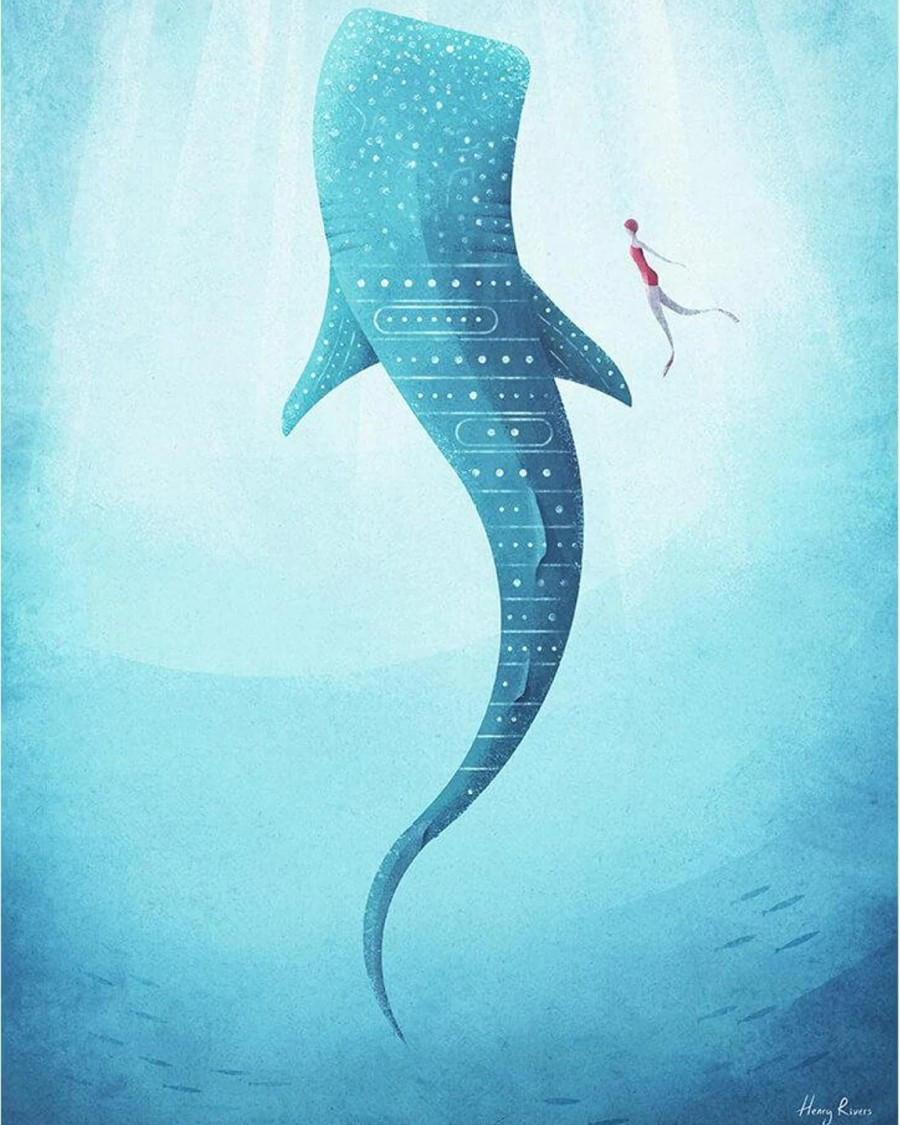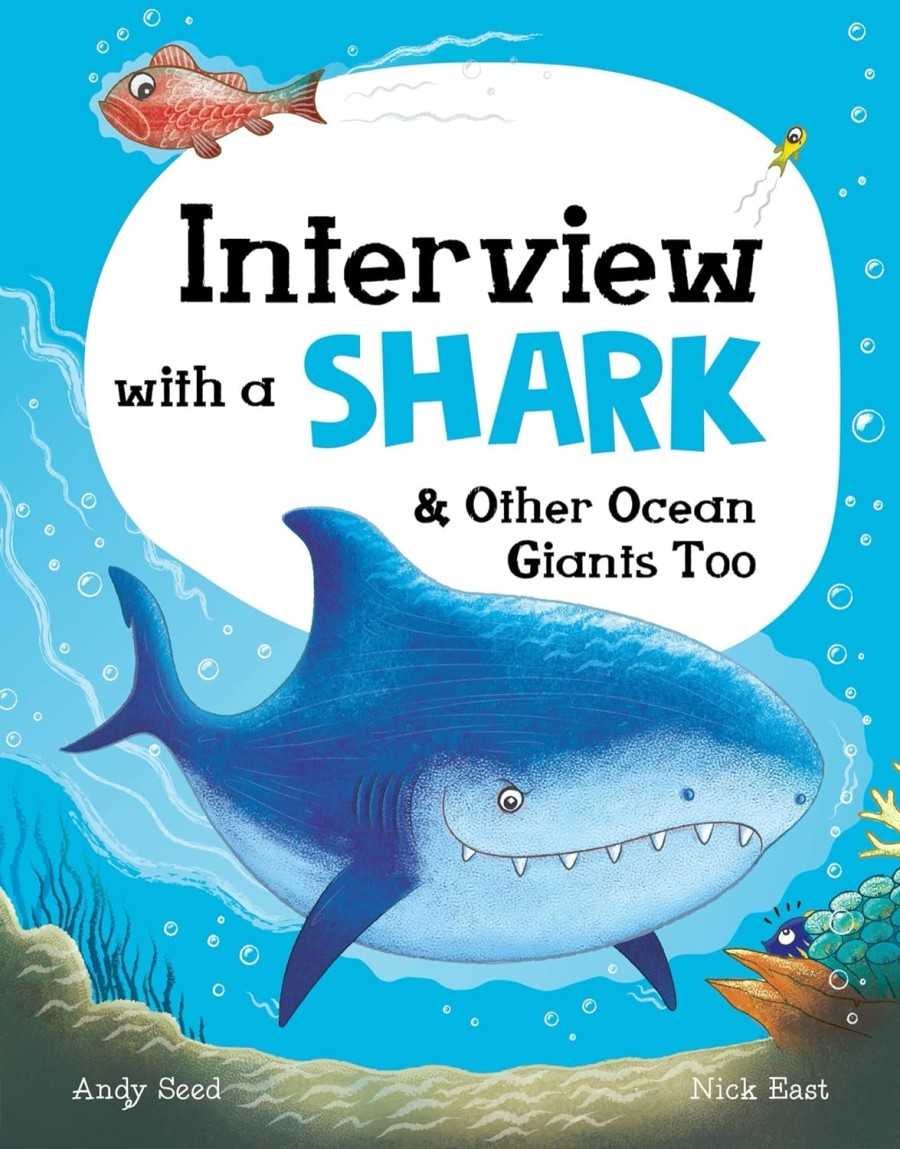
If you’re only familiar with Jaws (and know the man who wrote it now says he wishes he hadn’t, as it unfairly gave sharks a bad name), know that we have our own native sharks around English waters (mostly in the warmer southwest). But not to worry, because whale sharks (although huge filter-feeders) are completely harmless. Divers say they swim right past them! Whale sharks are very gentle, their mouths are wide open to take in plankton, their natural food.
If you dive or snorkel, keep well away from sharks to avoid bubbles or disturbance, and enter water gently to minimise splashing. If you see a whale shark, position yourself alongside so not to restrict movement. Don’t touch or feed it, nor use flash photography or jetskis. For help, call British Divers Marine Life Rescue (or be put through by coastguard or RSPCA).
Whale sharks around the size of a small bus, and the largest fish in the oceans. They prefer warmer waters so they don’t visit England much, but some are often seen off the Scilly Isle coasts. One good piece of news for whale sharks is that they are so large that often they don’t end up in aquariums, as they are too big to fit in them. But they are at risk in the wild, with just 200,000 or so left, their main risks being pollution, plastic and hunting. Like other marine creatures, they often get snagged in fishing nets and die in bycatch.
The biggest threat these days to whale sharks is plastic waste. Because whale sharks are filter feeders, this means they swim along with their huge mouths ingesting anything that passes their way. And that includes around 137 pieces of plastic an hour, according to some estimates. They then filter water out through their gills, and the plastic remains in their body.
other sharks found around England’s coast
Basking sharks are also found in England and are the second-largest fish. Again it eats plankton and some people mistake them for great white sharks. They often visit Cornwall and their teeth are smaller and mouths bigger than great white sharks, but they do have the same dorsal fin sticking out of the water, so people can easily think the worst and run back to the beach! Again they are gentle giants and only visit England during summer months, heading back to warmer waters during our winters.
Shortfin mako sharks are very fast, able to swim up to 50 miles per hour. They eat swordfish and tuna and like dolphins, drive up out of the water. They are not that common, but occasionally seen around English waters.
Blue sharks (like most other sharks) only visit England in summer, and sometimes travel up to 5000 miles to reach us! Swimming in large groups, they are fortunate to arrive here, as tiger and great white sharks often eat them on the journey.
Common thresher sharks have a tail that’s often longer than the shark, and they whip it around to stun prey, or to disorienate fish on seabeds. They are again summer visitors, but not that often.
Greenland sharks are smaller than great white sharks, and although they visit England now and then, they swim so deep down in the ocean that you’re unlikely to see them. They live from 250 to 400 years! The longest-living vertebrates, they only give birth after 150, and it takes 8 to 18 years to gestate a baby!
what about terrifying sharks?

All sharks are now severely endangered, including terrifying-looking great white sharks. But they usually only kill when mistaking surfboards for fish (hence most attacks are in Australia). Sharks (which form an important part of the ecosystem) also suffer to make shark fin soup (the fins cut off and then they’re thrown back in the sea to die). Never buy anything suspect while abroad (since June 2023, it’s now illegal to import shark fins into the UK). Also never buy shark teeth when abroad. Visit Bite Back for ways to help all sharks across the world.
A Day in the Life of Sharks is a beautifully illustrated guide to teach young readers about sharks, and why they are not as scary as people think, and how to protect these endangered creatures. Set over a 24-hour period, dive under the sea to follow the lives of sharks as they hunt, hide and play. The story features gargantuan whale sharks to tiny epaulette sharks (who hunt in rock pools), with gentle science explanations. Witness a great white shark escaping a pod of orcas and a nurse shark (asleep in a coral reef)
beauty brands with squalene/squalane
Although some companies now make plant-based versions, most squalene or squalane oil in cosmetics is from sharks. Commonly found in wrinkle creams, deodorants, lip balms, sunscreens and lipsticks, check for vegan logos before purchase. It takes 3000 sharks to make just one ton of squalene, meaning almost 3 million sharks are killed each year, just to take oil from their livers, to use in the beauty and pharmaceutical industries.
The reason shark liver oil is used is because their swim bladders keep them buoyant in the ocean, but you can get the same effects from plant-based squalene from olives, sugarcane, rice brand, wheat germ or amaranth seed. And just like ‘shark finning’, often the people who sell the livers remove the liver, then just throw the creatures back in the ocean.





